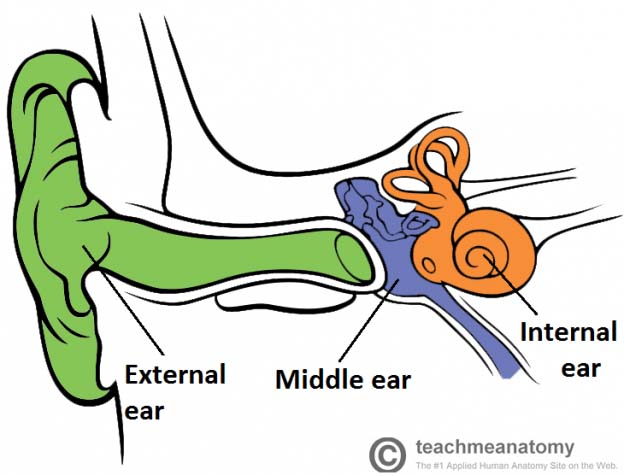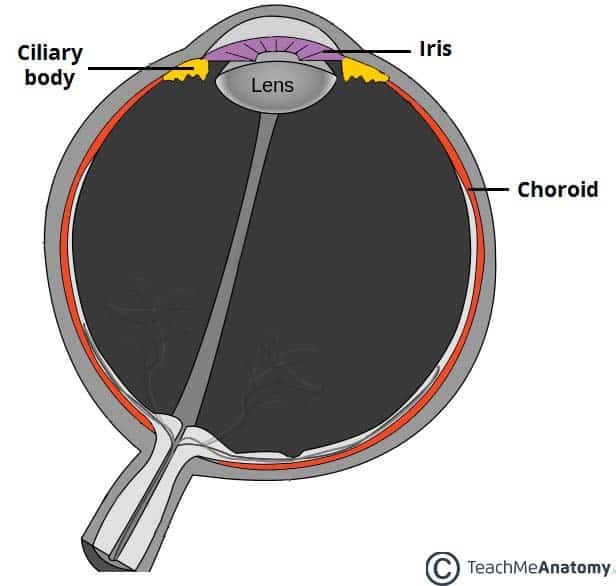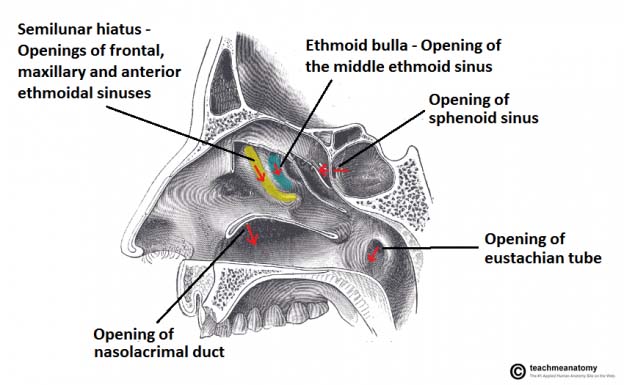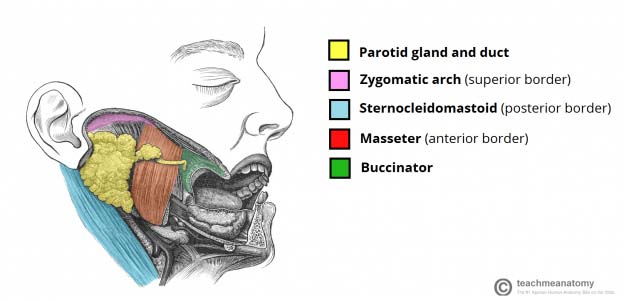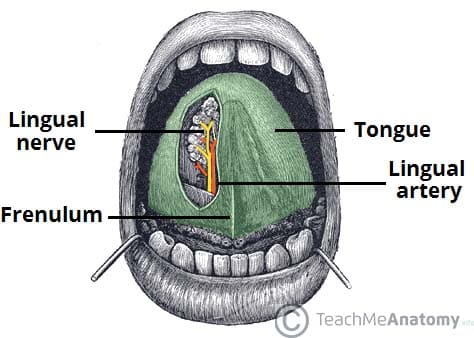- The Basics
- Head
- Neuroanatomy
- Neck
- Thorax
- Back
- Upper Limb
- Lower Limb
- Abdomen
- Pelvis
- 3D Body
Organs of the Head
The Organs of the Head include: the ear, the eye, the nose and sinuses, the salivary glands, and the oral cavity.
The ear can be divided in to three sections: the external ear, the middle ear, and the inner ear. The external ear functions to capture and direct sound waves through the external acoustic meatus to reach the tympanic membrane (ear drum). The tympanic membrane marks the separation of the external ear from the middle ear. The middle ear is designed to transmit vibrations from the tympanic membrane to the inner ear via the auditory ossicles (bones of the middle ear). Vibrations of the tympanic membrane cause movement of the auditory ossicles (malleus, incus and stapes). This energy is then transmitted to the inner ear through the oval window.
The eye, an organ responsible for vision, is located within the bony orbit. Light enters the eye through the pupil, an aperture whose size is controlled by the ciliary muscles. Specialised photoreceptors, called rods and cones, detect light passing through the eye and reaching the retina: a specialised layer at the back of the eye.
The nose with both olfactory and respiratory functions can be split into the external nose and the nasal cavity. The external nose consists of both bony and cartilaginous components. The external nose opens into the nasal cavity through the anterior nares (nostrils). The lateral wall of the nasal cavity has three pairs of bony projections called turbinates, which function to humidify inspired air. The nasal cavity drains secretions from the 4 pairs of paranasal sinuses. The paranasal sinuses are 4 pairs of airspaces within the bones of the skull, consisting of the frontal, sphenoid, ethmoid and maxillary sinuses. They are a superior extension of the respiratory tract, functioning to humidify inspired air.
The oral cavity marks the start of the gastrointestinal tract, with three major functions of digestion, communication and breathing. The roof of the mouth comprises of the hard and soft palates; whereas, the floor of the mouth consists of the tongue, salivary glands and the hyoid muscles. The salivary glands consist of three pairs of exocrine glands: the parotid, submandibular and sublingual glands.
In this section, learn more about the organs of the Head including: the ear, the eye, the nose and sinuses, the salivary glands, and the oral cavity
